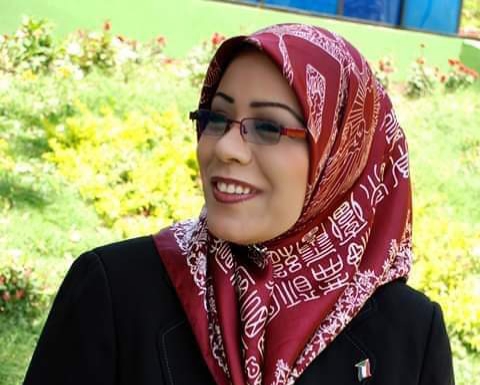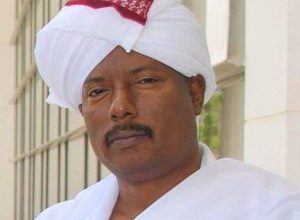Opinion
The Little Warriors

Dr. Enas Mohammed Ahmed
Due to the hardships and challenges of life, ancient societies knew nothing about children’s rights. Instead, children were treated as adults and involved in meeting life’s demands, raiding tribes, and gathering spoils of war.
With the advent of primitive agriculture, all family members, including children, participated in farming and herding. Large families were sought to help with these tasks under an absolute paternal authority that allowed fathers to expel, sell, kill, pawn, or lease their children’s services to others due to debts. This practice gave rise to slavery and child recruitment in armed conflicts for plundering, marking the emergence of child soldiers. These actions were neither rejected nor condemned, as they were normalized by prevailing customs and traditions.
Childhood endured varying degrees of violations throughout history until the advent of divine religions, particularly Islam, which marked a monumental shift in children’s rights, resulting in genuine progress and implementation.
During the Crusades in 1212, Europe launched a campaign against the East, famously known as the “Children’s Crusade,” aimed at Jerusalem. This campaign led to the death of 30,000 children who were killed or injured in the war. In 1764, King Louis XV of France opened the first military school, enrolling over 200 children aged between 8 and 11 for rigorous military training, with some dying during the process.
In the 19th century, child labor became widespread in Europe. France, between 1841 and 1881, introduced laws to protect children at work in terms of wages and job nature. At the time, child labor was not considered a violation of children’s rights.
At the dawn of the 20th century, efforts to protect children gained momentum. British rights activist Eglantyne Jebb (1876–1928) played a key role by working in charities that supported children. She founded the Save the Children Fund, the first independent movement advocating for children, and famously said, “Every generation of children offers mankind the possibility of rebuilding a destroyed world.” She drafted the Geneva Declaration of the Rights of the Child and presented it at numerous conferences in London and Geneva in 1922. Her efforts led to the League of Nations adopting the declaration in 1924 as an international document.
This declaration was the first of its kind to focus on children’s rights, comprising five principles: spiritual and physical development, legal and social protection, relief, training, and brotherhood. Since then, children gained rights both as minors and as members of the human community.
In 1946, the United Nations established the United Nations International Children’s Emergency Fund (UNICEF), focusing on rescuing children from the aftermath of World War II and devising comprehensive strategies to protect childhood.
In 1948, the Universal Declaration of Human Rights included Article 25, which emphasized the rights of mothers and children to care, assistance, and social and legal protection.
In 1959, the United Nations adopted the Declaration of the Rights of the Child, which recognized the rights to life, education, play, healthcare, and a supportive environment.
The International Covenant on Civil and Political Rights and the International Covenant on Economic, Social, and Cultural Rights, adopted in 1966, further supported human rights, including those of children.
In 1979, the UN proclaimed the International Year of the Child, celebrating two decades of advancements in children’s rights. That same year, it issued the UN Minimum Rules for the Administration of Juvenile Justice, laying out principles for rehabilitating children in conflict with the law.
The milestone came on November 20, 1989, when the UN adopted the Convention on the Rights of the Child. This comprehensive international document consolidated children’s rights in a globally agreed framework.
In 2000, the UN adopted two optional protocols to the Convention: one prohibiting the involvement of children in armed conflicts and the other addressing the sale of children and their exploitation in pornography. A new protocol introduced in 2011 enabled the submission of complaints regarding violations of children’s rights.
Sudan was among the first countries to sign and ratify the Convention on the Rights of the Child in August 1990. The 2005 transitional constitution reaffirmed this commitment in Article 32(5). Sudan also ratified subsequent protocols, enacted the 2004 and 2010 Child Acts, and established national councils and special courts for children.
Despite these advancements, child recruitment remains one of the gravest violations of children’s rights, particularly during armed conflicts. Globally, child soldiers continue to be used due to their lower cost and manipulability, making them easy targets for exploitation.
The International Criminal Court considers recruiting children under 15 a war crime. In Sudan’s ongoing war, the Rapid Support Forces (RSF) have been accused of systematic violations against children, including recruitment. In December 2023, a UN fact-finding mission documented the RSF’s use of child soldiers as young as 10, often forcibly recruited or coerced through economic desperation.
UNICEF reported that 2023 witnessed the highest verified cases of grave violations against children in over a decade, with 72% involving killings, forced recruitment, and sexual violence. The African Center for Justice and Peace Studies and local organizations have urged the RSF to cease recruiting children, many of whom serve as human shields on the frontlines.
In September 2024, Sudan’s Attorney General accused the RSF of recruiting 9,000 children, 4,494 of whom were killed in combat. This represents a humanitarian catastrophe for Sudanese children, underscoring the urgent need for international condemnation of such war crimes.



